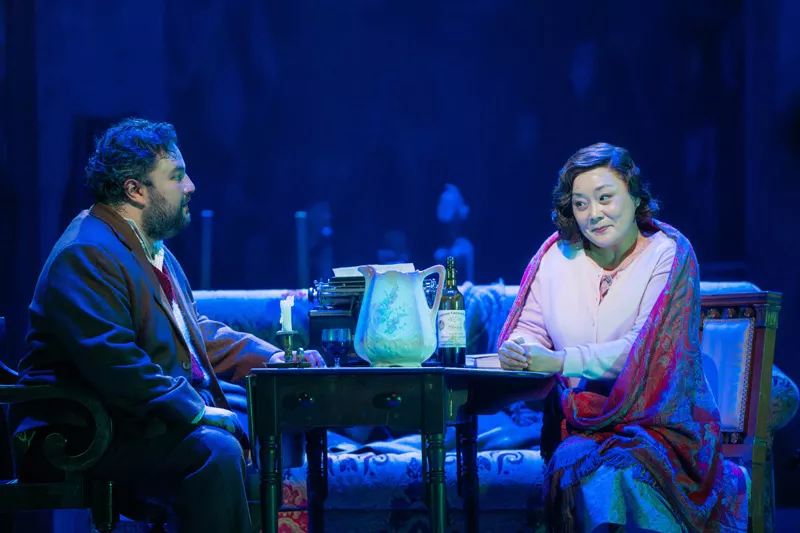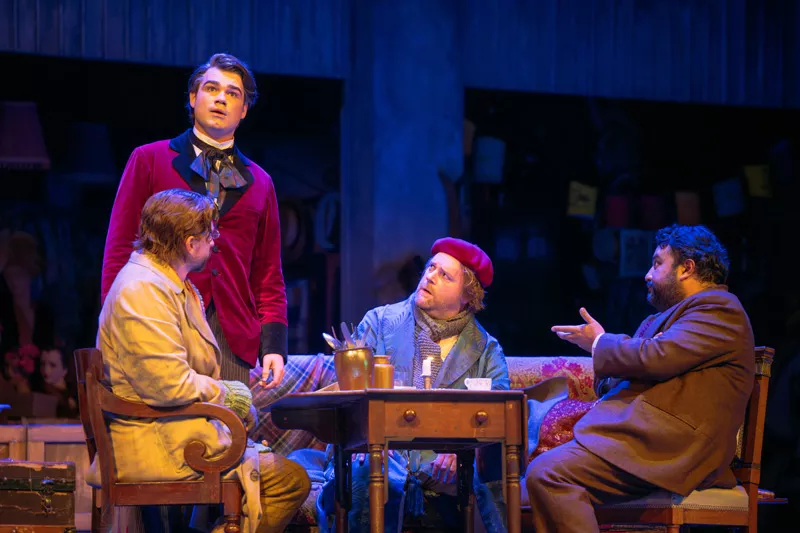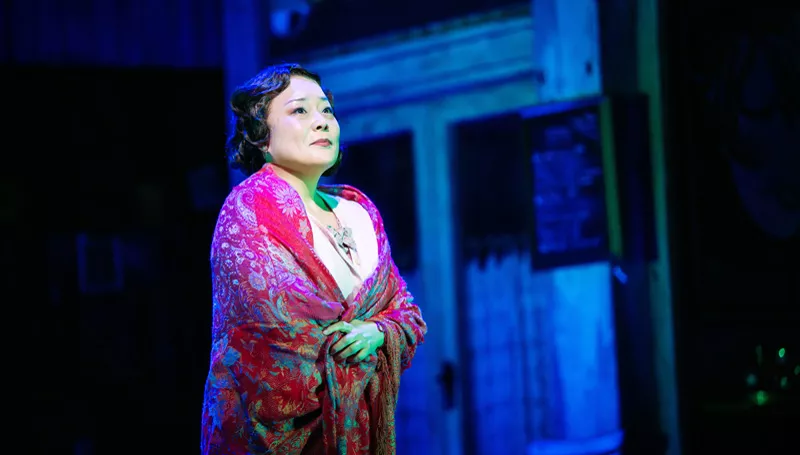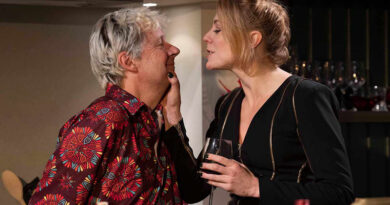“La bohème”, Theatre Royal, Glasgow
Mark Brown on Clydeside
12 October 2025
★★★★★
Puccini’s great opus La bohème is one of the four most performed works in the global operatic canon. Based on Henri Murger’s 1851 novel Scènes de la vie de Bohème and premiered in Turin in 1896, the opera tells the story of Mimi, an impoverished Parisian seamstress, and her friends, who are struggling artists and writers (the “Bohemians” of Murger’s title).

Mario Chang and Hye-Youn Lee.
Photo credit: Mihaela Bodlovic.
The beloved work is given vivid and emotive expression in this staging by co-producers Scottish Opera and Theater St. Gallen of Switzerland. A revival of the deservedly acclaimed production from 2017, the piece is directed, designed and choreographed by the operatic duo Barbe & Doucet (aka André Barbe and Renaud Doucet).
Performed under a huge photographic postcard of residential Paris in the nineteenth century, the drama (in which Puccini’s music is partnered by a libretto by Luigi Illica and Giuseppe Giacosa) is set within the frame of the French capital as it is today (complete with international tourists). However, the action of the piece occurs in the early 1830s, a period that wedged uneasily between the end of the Napoleonic era and the proletarian uprising of the Paris Commune in 1871.
Barbe & Doucet’s hyper-real set – which depicts a small square in downtown Paris – is a work of deceptive versatility. It accommodates with impressive ease the gloomy, desperately cold loft apartment that is home to Mimi’s lover, the poet Rodolfo, and his friends.
There it is that the ill-fated, consumptive Mimi and Rodolfo first meet, and – in a moment of delightful dramatic shorthand – fall in love almost instantaneously. The scene contains – in ‘Che gelida manina’ (‘What a frozen little hand’) – one of the great arias of Italian opera.
The celebrated Guatemalan tenor Mario Chang (playing Rodolfo) delivers the song with a combination of sensitivity and power that truly tingles the spine. Opposite him, the superb South Korean soprano Hye-Youn Lee imbues Mimi’s response (‘Si, mi chiamano Mimì’ / ‘Yes, they call me Mimi’) with a range and feeling that are equally affecting.

Photo credit: Mihaela Bodlovic.
The outstanding performances by Chang and Lee extend throughout the cast. The painter Marcello (Roland Wood), the musician Schaunard (Edward Jowle), the philosopher Colline (Callum Thorpe) and the singer Musetta (Rhian Lois) are all sung beautifully and rendered with skilful empathy.
Tragic though the opera ultimately is, this intelligent and bold production draws out its sense of spectacle, and its sense of humour, beautifully. For instance, there is delicious visual humour – during a scene in contemporary Paris – when a glamorous young woman is joined by a self-regarding, silver-haired gent who looks like the late fashion designer Karl Lagerfeld.
Barbe & Doucet’s stated objective is to create opera productions that land “somewhere between the sacralization of a work, which kills it by rendering it inviolable, and the betrayal of a work, which only corrupts it”. It is an admirable aim, and one that this marvellously balanced production achieves in spades.
At Theatre Royal, Glasgow, various dates until 25 October, then touring Scotland until 22 November: https://www.scottishopera.org.uk









